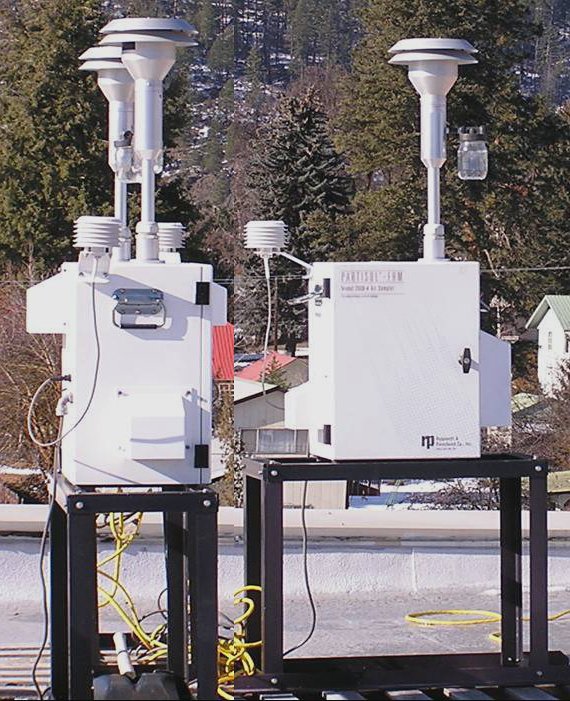Gravimetric Monitoring
Gravimetric monitors rely on weighing airborne particles to determine concentrations, it is a well established but labor intensive sampling approach. Filters to collect particulate matter must be conditioned, weighed before sampling, installed and removed from the instrument, and reconditioned and weighed again at a special facility to determine the mass concentration of particulate collected. Results may not be available for days or weeks. Airflow rates and elapsed sampling time must be carefully tracked and recorded to ensure accurate results. Filter-based techniques integrate samples over a relatively long period of time, usually 24- hours, to obtain the required minimum mass for analysis. Gravimetric monitoring is best for projects where high-accuracy is needed and the time delay in receiving the data is not a problem. State monitoring networks designed to detect violations of air quality standards rely largely on gravimetric monitors. Specific monitoring devices must be approved by EPA for this task and are called Federal Reference Method (FRMs) and Federal Equivalent Methods (FEM).
TEOM or Tapered element oscillating microbalance is one common gravimetric monitoring method.
A tapered element oscillating microbalance monitor (TEOM) measures PM-10 or PM-2.5 mass concentrations. Particulate is continuously collected on a filter mounted on the tip of a glass element that oscillates in an electric field. The glass element is hollow, with the wider end fixed. Air is drawn through the filter and through the element. The oscillation of the glass element is maintained based on the feedback signal from an optical sensor. The resonant frequency of the element decreases as mass accumulates on the filter, directly measuring inertial mass. Temperatures should be maintained at a constant value to minimize thermal expansion of the tapered element. The TEOM is a Federal Equivalent Method.

Source: Andy Trent, Mary Ann Davies, Richard Karsky, and Rich Fisher. 2001. Real-Time Smoke Particulate Sampling Fire Storm 2001.
2012. Thermo Scientific. Continuous Ambient Particulate TEOM Monitor, Series 1400ab. Accessed on 24 January 2012. Available at: https://thermoscientific.com